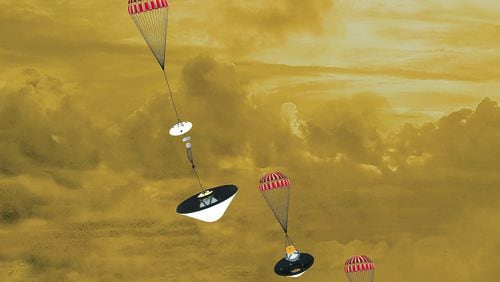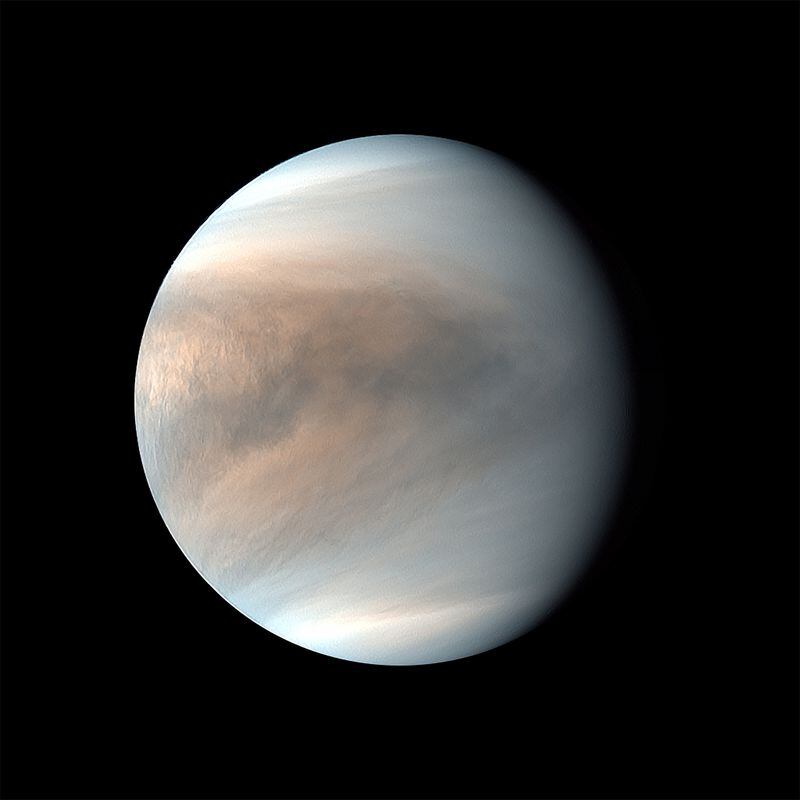NASA finally is going back to Venus, for the first time in more than three decades. And a second time, too.
On Wednesday, Bill Nelson, the NASA administrator, announced the agency’s latest choices for robotic planetary missions, both expected to head to Venus in the late 2020s: DAVINCI+ and VERITAS.
“These two sister missions both aim to understand how Venus became an inferno-like world capable of melting lead at the surface,” Nelson said during his State of NASA address to the space agency’s workforce.
Venus is in many ways a twin of Earth — it is comparable in size, mass and composition, and it is the planet whose orbit is the closest to Earth’s. But the history of the two planets diverged. While Earth is moderate in temperature and largely covered with water, Venus, with a dense atmosphere of carbon dioxide, is a hellishly hot 900 degrees Fahrenheit at the surface. After numerous missions by the United States and the Soviet Union to explore it in the 1970s, ’80s and ’90s, attention shifted elsewhere.
In the past year, a neglected Venus reentered the planetary limelight after a team of scientists using Earth-based telescopes claimed they had discovered compelling evidence for microbes living in the clouds of Venus today where temperatures remain comfortably warm instead of scorching.
They said they had detected a molecule, phosphine, for which they could come up with no plausible explanation for how it might have formed there except as the waste product of living organisms.
But other scientists looking at the same data said they did not observe a convincing signal. Still, the finding prompted Jim Bridenstine, then NASA’s administrator, to say in September, “It’s time to prioritize Venus.”
Last year, NASA had winnowed proposals for its Discovery program, in which scientists come up with ideas for smaller planetary missions with modest price tags, down to four finalists.
Two of them, DAVINCI+ and VERITAS, proposed explorations of Venus.
The other finalists were Io Volcanic Observer, which would have explored Io, a moon of Jupiter that is the most volcanically active body in the solar system, and Trident, which would have sent a spacecraft flying past Triton, an intriguing large moon of Neptune.
DAVINCI+ could conclusively confirm the presence of phosphine. As it approaches Venus, the spacecraft would drop a spherical probe chock-full of instruments that would sniff and analyze gases as it descended through the atmosphere for just over an hour.
DAVINCI is a shortening of Deep Atmosphere of Venus Investigations of Noble Gases, Chemistry and Imaging. The plus sign indicates enhancements over a previous proposal, DAVINCI.
Concentrations of krypton, argon, neon and xenon — the noble gases that do not react with other elements — may provide hints about how Venus and its atmosphere formed. The measurements might also find signs of whether water has escaped from Venus into space and whether oceans ever covered the surface.
And the same instruments could also directly identify phosphine molecules, and that would then lead to a spirited debate about whether the phosphine was definitive proof of life or whether some geological or chemical reactions not involving biology could have generated it.
A negative result would not close the issue. Because the DAVINCI+ probe will sample the atmosphere at just one location at one time, the absence of phosphine there would not prove the absence of phosphine everywhere.
VERITAS, short for Venus Emissivity, Radio Science, InSAR, Topography & Spectroscopy, will send an orbiter that would produce high-resolution three-dimensional global maps using radar, and a spectrometer will identify what the surface is made of. It will also precisely measure variations in the planet’s gravitational pull, which will offer clues to its interior geological processes.
Studying Venus will also shed light on the other rocky planets in the solar system including Earth. “We hope these missions will further our understanding of how Earth evolved and why it’s currently habitable when others in our solar system are not,” Nelson said.
NASA’s last spacecraft dedicated to exploring Venus, Magellan, arrived in 1990, and it spent four years mapping the planet’s surface with a sophisticated radar instrument.
Since then, NASA has successfully sent a parade of spacecraft to Mars — five rovers, four orbiters and two landers — striving to understand the history of water and the possibility of life on the red planet. But the agency has sent none to Venus. Other space agencies have visited Venus more recently. The European Space Agency launched Venus Express in 2005, and it orbited the planet for eight years, observing young lava flows and other evidence that it might still be geologically active.
Akatsuki, from the Japanese space agency, is the only spacecraft currently at Venus. In its study from orbit, the spacecraft has revealed disturbances in the planet’s winds known as gravity waves, as well as equatorial jet streams in its atmosphere.







